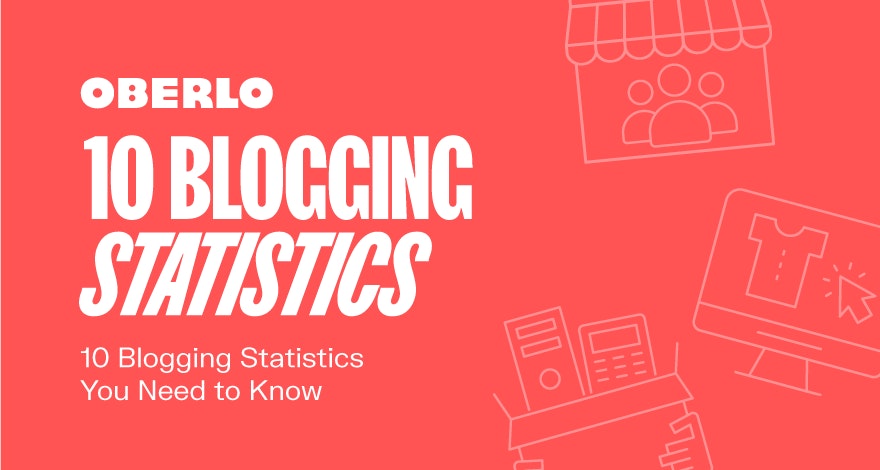You’ve finally launched your dropshipping store and you’re now ready to step into the world of ecommerce marketing. If you’ve already started to dig around, then you must have come across the idea of starting a blog and the benefits it offers.
It’s true: blogging statistics and data show that it can be hugely beneficial for online stores. But just knowing that blogging can help grow your business is barely enough information to start.
Questions must be swirling through your head: How many bloggers are there in the world? What’s the average blog post length? How often should I blog?
To answer these questions, we’ll be giving you concrete numbers on blogging statistics. That way, you’re armed with all the information you need to craft an effective blog content strategy that can give your ecommerce business the boost it needs.
Without further ado, here are ten blogging statistics you need to know in 2023.
Post Contents
- 1. How Many Blogs Are There?
- 2. How Many Bloggers Are There in the United States?
- 3. Most Popular Format Among Content Marketers
- 4. Average Blog Post Length
- 5. Average Time to Write a Blog Post
- 6. Importance of Content Quality
- 7. How Bloggers Promote Blog Posts
- 8. Blogging Statistics: Posting Frequency
- 9. Role in Consumers’ Buying Process
- 10. Blogging as Inbound Marketing Priority
- Conclusion
- Summary: Top Blogging Statistics You Need to Know in 2023
- Want to Learn More?



1. How Many Blogs Are There?
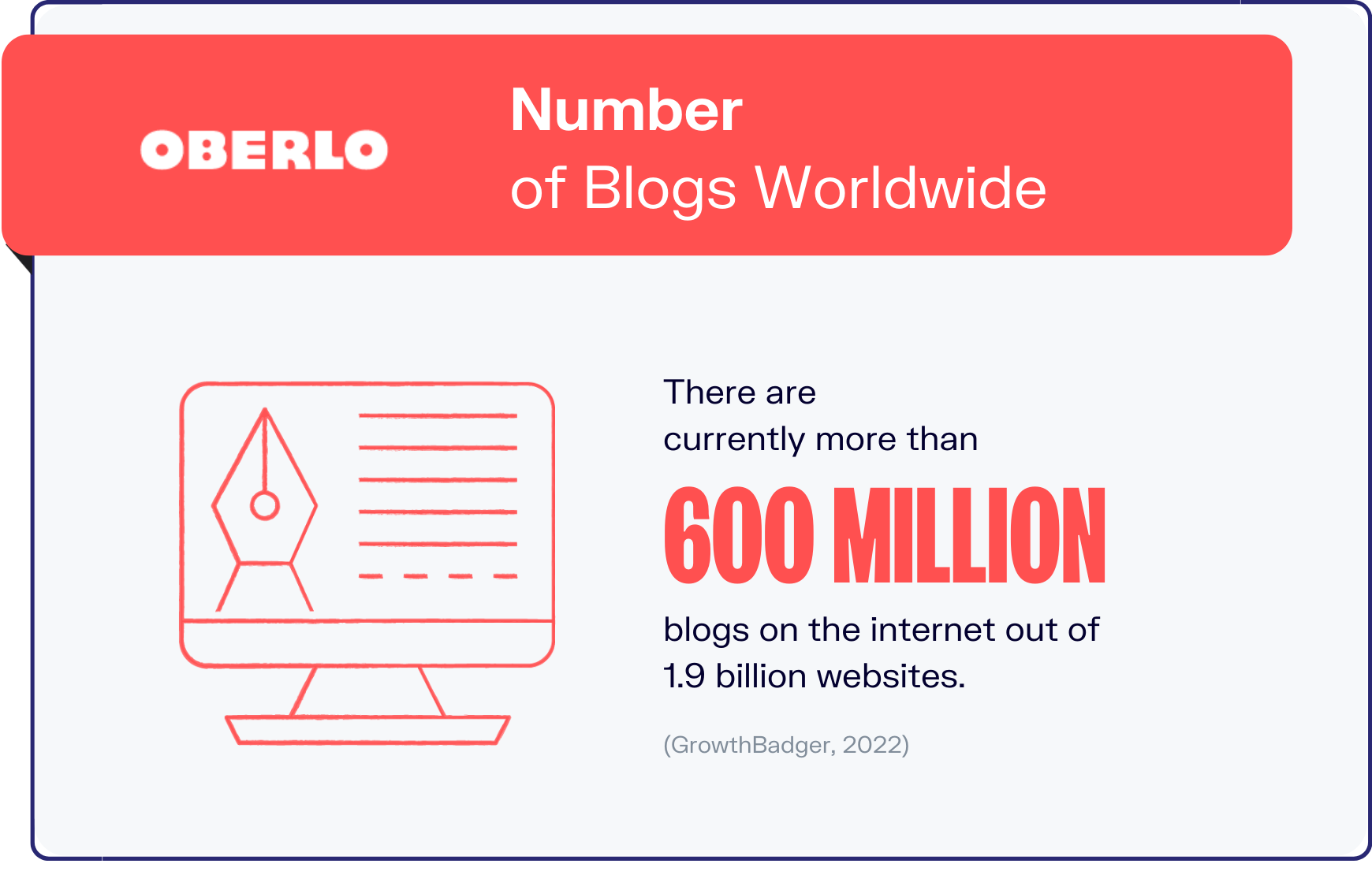
The very first blogging statistic you need to know is the number of blog posts there currently are. So you have an idea of the competition you’re up against, the latest estimates put this figure at more than 600 million out of the 1.9 billion websites there are (GrowthBadger, 2022).
→ Click Here to Launch Your Online Business with Shopify
Recent statistics also show that one of the most popular blogging platforms, WordPress, sees approximately 70 million new posts on its platform every month.
With these blogging statistics reflecting such fierce competition, you’ll need to go the extra mile to make sure your company blog stands out. That can mean having an attractive blog design and layout to compel readers to stay. It’s also essential to write about compelling and interesting blog topics, which will require a strong understanding of your target audience and market and staying up to date with the latest market trends.
2. How Many Bloggers Are There in the United States?
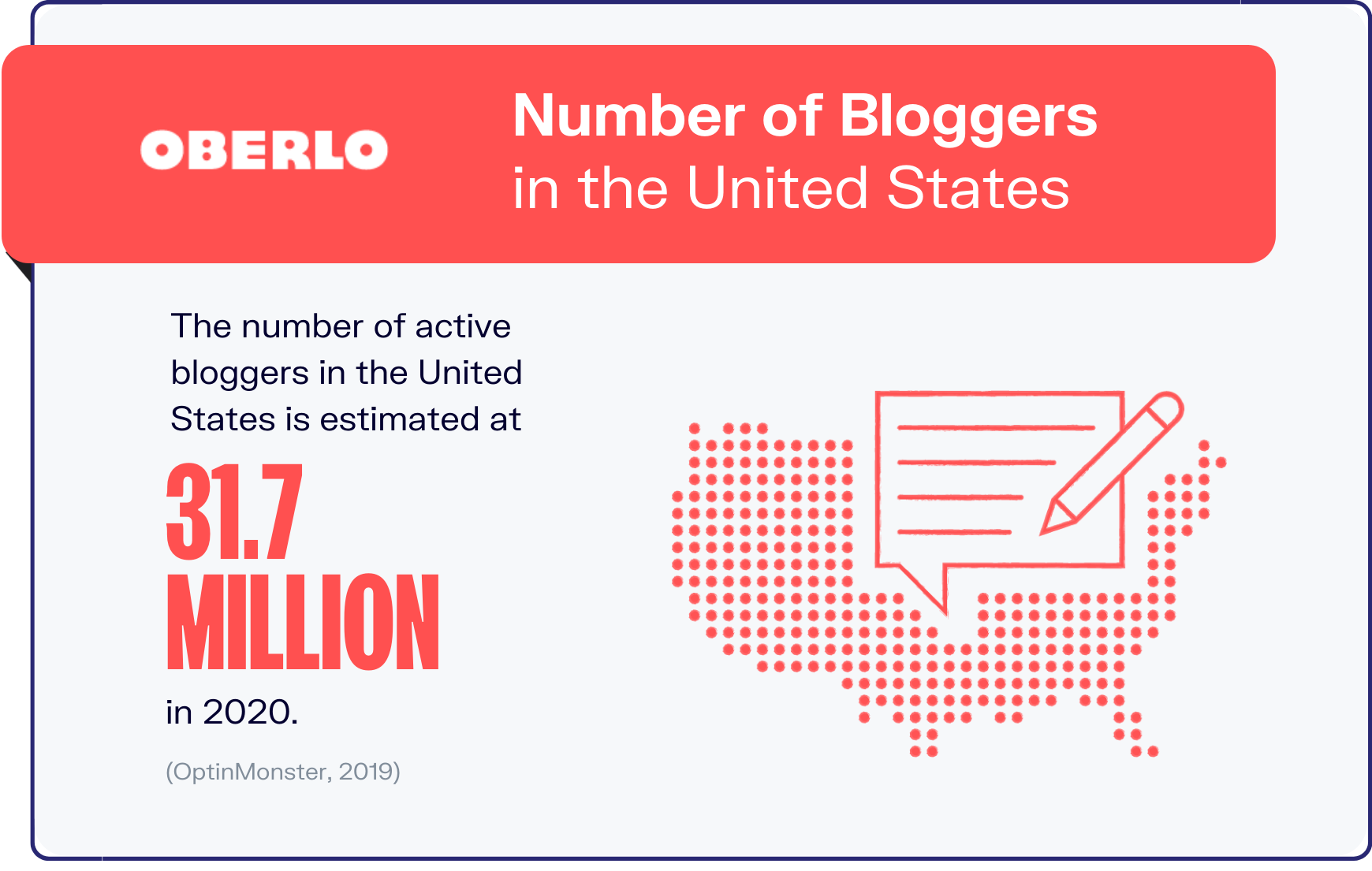
Blogging is one of the most popular and effective ecommerce marketing strategies. With the United States as the second-biggest ecommerce market in the world, it should come as no surprise that it’s home to millions of bloggers.
In fact, the number of active bloggers in the United States was forecast at 31.7 million in 2020 (Optinmonster, 2019). That marked a 12 percent increase in the five-year period from 2015 to 2020.
Before you jump into the mix, you may want to do some research on the type of content you should be focusing on. This will depend on many factors, including the angle of your content, your market, and the interests of your target audience.
When it comes to blog content, the possibilities are endless. From how-to formats and interviews to guides, tips, news, and everything in between, you’re basically spoiled for choice.
3. Most Popular Format Among Content Marketers
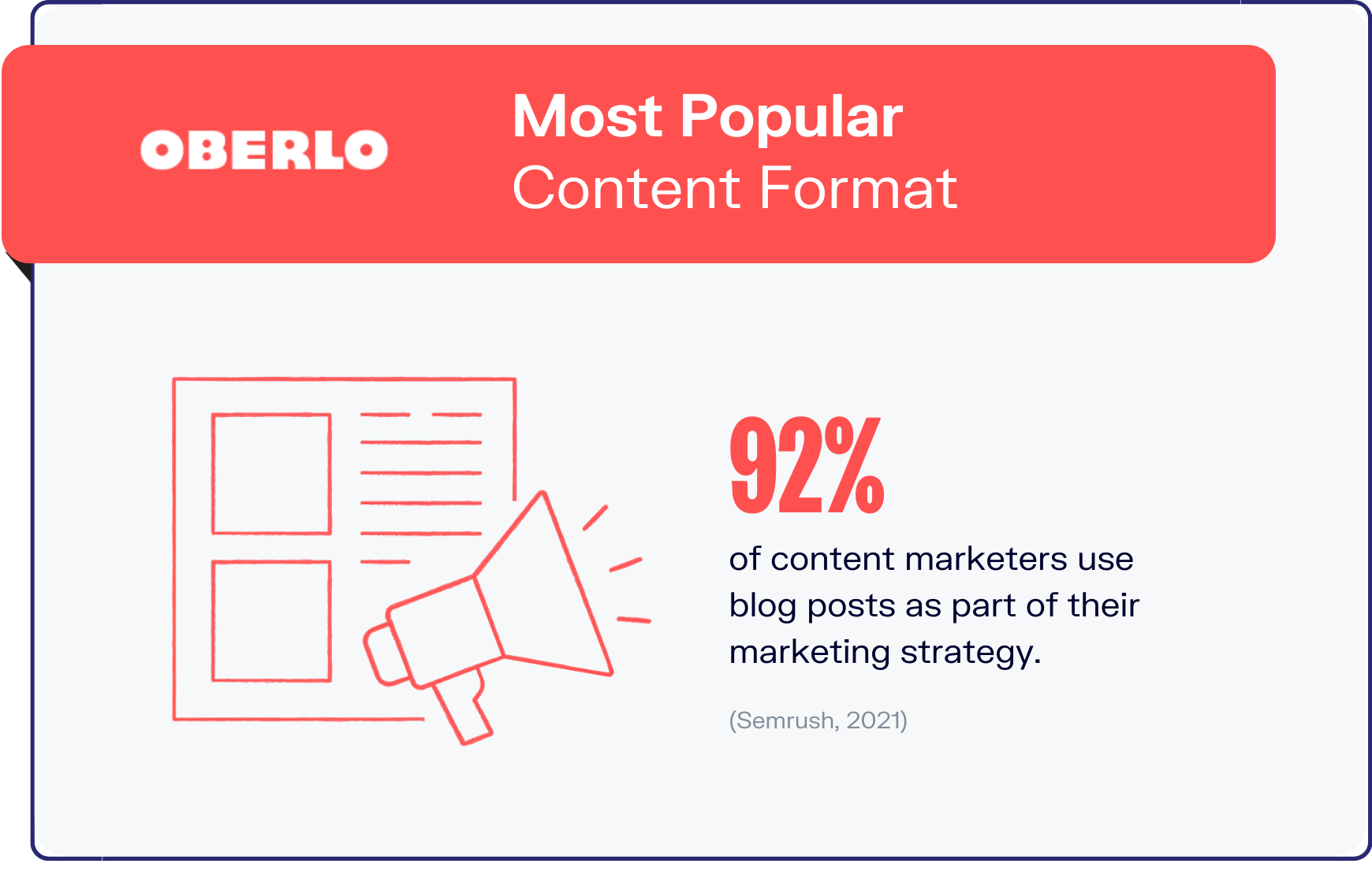
Who better to rate the value of blogs than the experts – content marketers?
According to a recent survey, blog posts continue to be the most popular content format among content marketers, with more than nine out of every ten of them producing blog posts to help achieve their overall marketing goals (Semrush, 2021).
In comparison, the next two most popular formats, emails and infographics, are only carried out by 66 percent and 45 percent of all content marketers.
There are clear advantages of prioritizing blogs over other formats. Businesses with a blog receive 55 percent more visitors to their website than those that don’t. They also produce 67 percent more leads every month.
Having said that, it would be a costly mistake for businesses to not include a blog strategy in their overall marketing strategy.
4. Average Blog Post Length
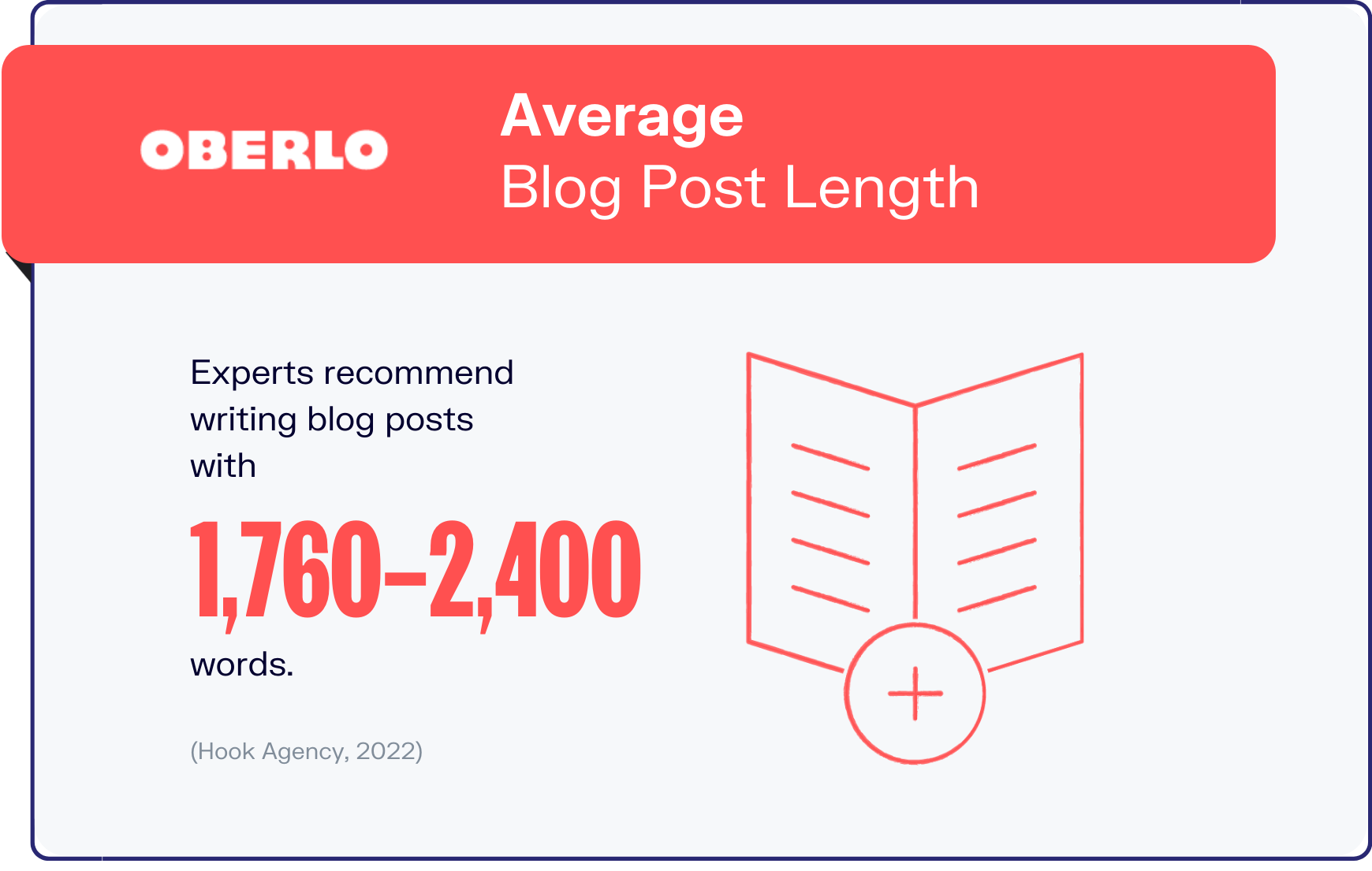
If you’re completely new to blogging, one of the first questions that’ll undoubtedly come to mind is, “How many words should a blog post have?”
Unfortunately, there’s no “right” answer. There are plenty of factors that go into determining the ideal length of a blog post. This includes the topic, depth, keywords, format, quality, industry, and more.
That said, here’s a guiding figure. Experts recommend writing blog posts that have between 1,760 and 2,400 words (Hook Agency, 2022). This key blogging statistic can help you plan your content.
Keep in mind that this is just a guide. The general rule of thumb is that the more detailed a blog post is, the higher its quality. That’s because it allows the writer to hone in on specifics as well as rank for multiple related keywords instead of just one or two.
This means that longer blog posts are more comprehensive, attract more quality traffic, have better SEO, and generate better results. If you’re hoping to rank on Google, the most popular search engine, extensive blog posts are the way to go, as Google’s algorithm is known to favor longer content over shorter ones.
5. Average Time to Write a Blog Post
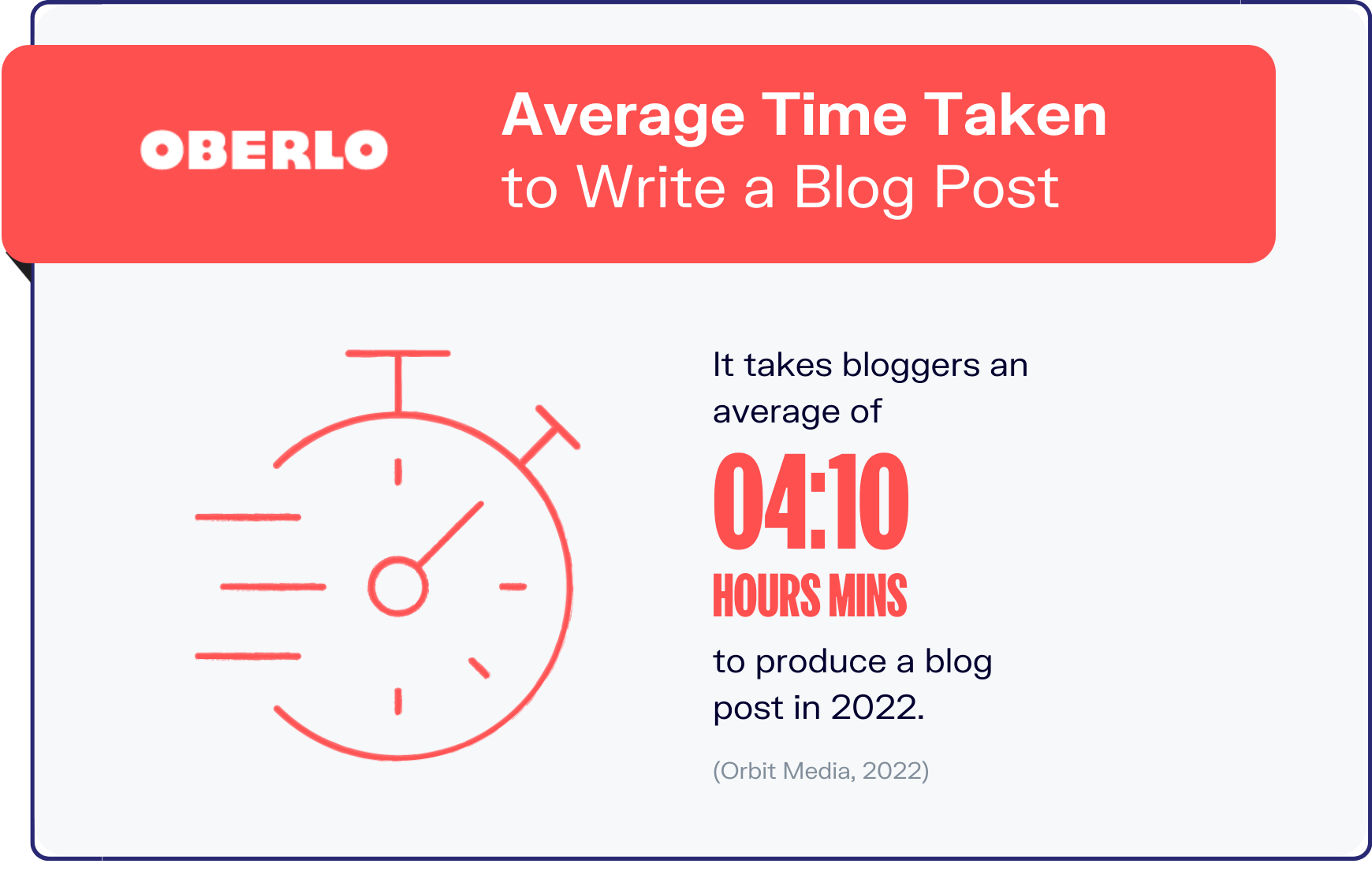
As word length increases, naturally, so will the amount of time taken to produce a blog post. The latest blogging statistics show that on average, it took four hours and 10 minutes to write a blog post in 2022 (Orbit Media, 2022).
This is nine minutes longer than in 2021 and 15 minutes longer than in 2020. More importantly, it’s over 1.5 hours longer than what content writers spent to create a blog post in 2014, which is pretty much in line with the increase in the overall word count in recent years.
It appears the extra dedication is also paying off. Writers who spend more time on a blog post see more positive results from their posts than those who spend less time on it.
For instance, over one-third (36 percent) of bloggers who take more than six hours to produce a blog post report stronger results, as opposed to the 19 percent of bloggers who spend between one and two hours writing a post.
6. Importance of Content Quality
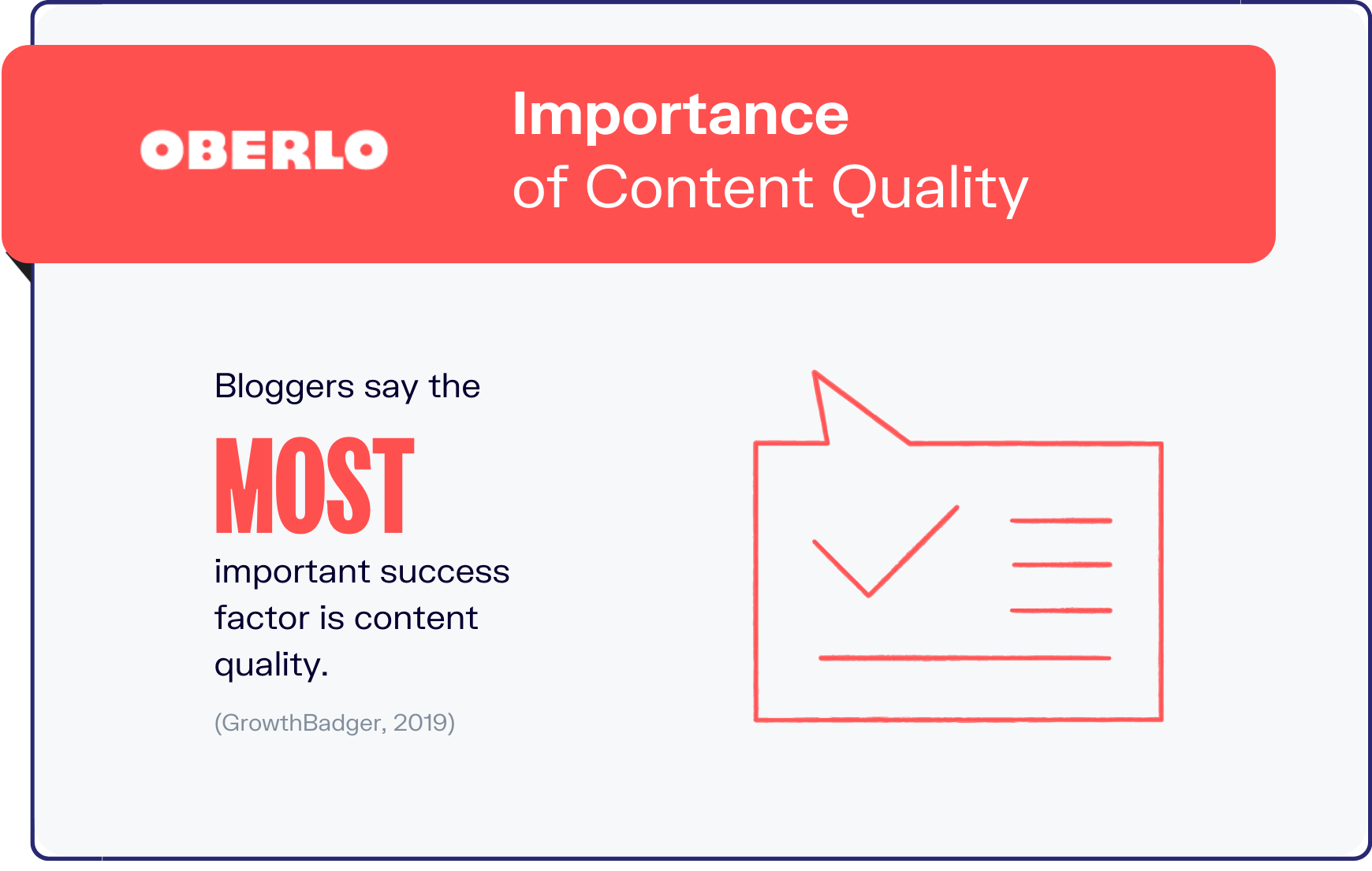
The increase in the amount of time taken to write a blog post may also be due to the high emphasis placed on content quality.
Blogging statistics from a recent survey show that “quality of content” is rated the most important success factor among all bloggers (GrowthBadger, 2019). In fact, more than one-third of high-earning bloggers (those who earn over $50,000 annually) say that the demand for higher-quality content by readers is now higher than it was two years ago.
But what makes content high quality? Aside from technicalities such as layout and formatting, visual appeal, spelling and grammar, and so on, quality content goes beyond these basics.
More importantly, factors include ranking well on Google, achieving marketing goals, engaging on social media, having a high conversion rate, and more.
7. How Bloggers Promote Blog Posts
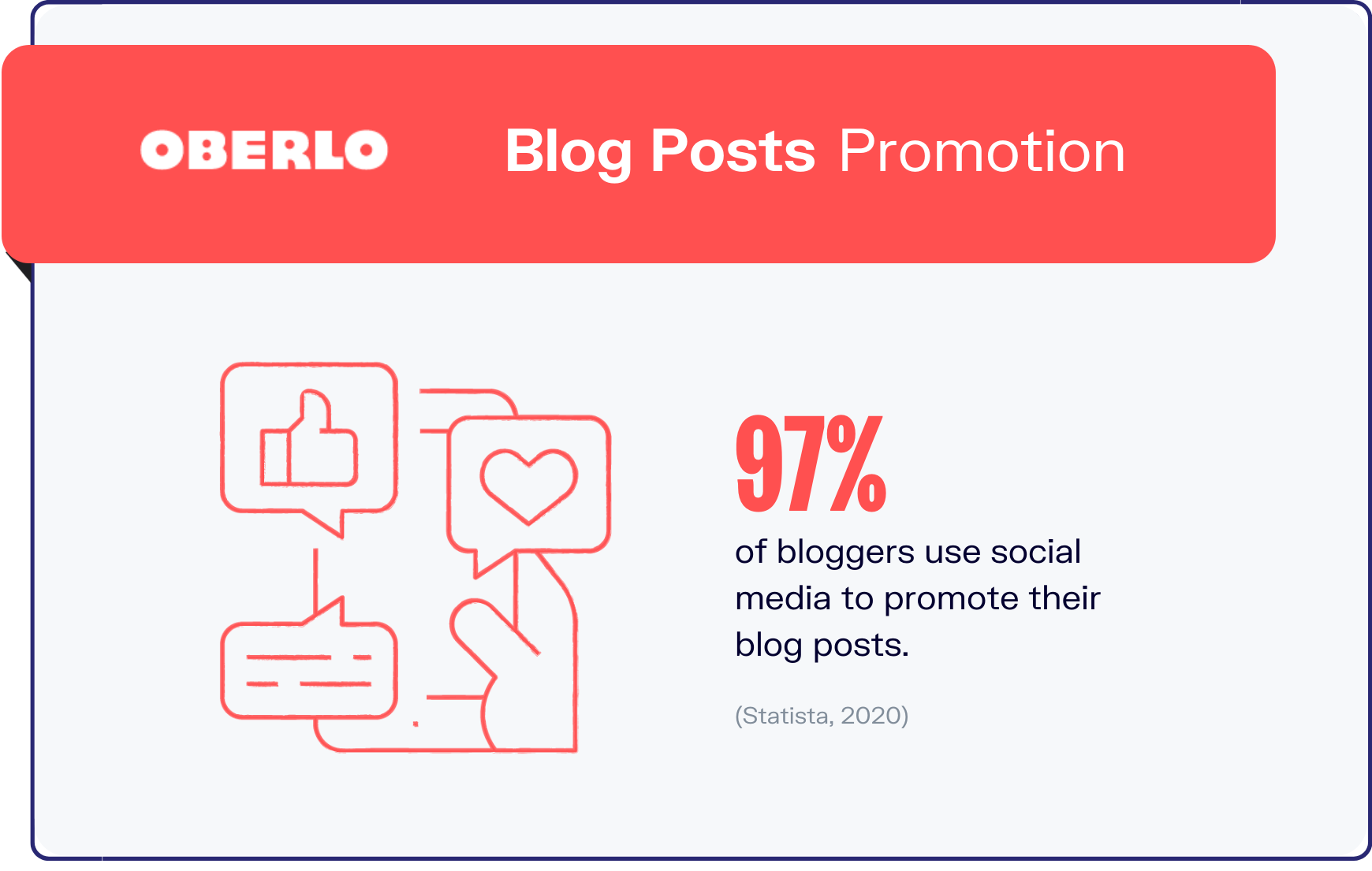
When it comes to blog content, distribution is equally as important as creation. Simply hitting the “publish” button without any follow-up action is unlikely to get you organic web traffic anytime soon.
That’s where social media plays an important role. Nearly all bloggers today promote their blog content via social media sites, whereas two-thirds of them are using email marketing (Statista, 2020).
Whether you’re using Facebook, Twitter, TikTok, or other channels, a social media distribution strategy is an absolute must. This is especially important considering the reach your content is able to get—there are 3.5 billion social media users worldwide.
Plus, with so many social media tools at your disposal, there’s really no reason to not take advantage of them.
8. Blogging Statistics: Posting Frequency
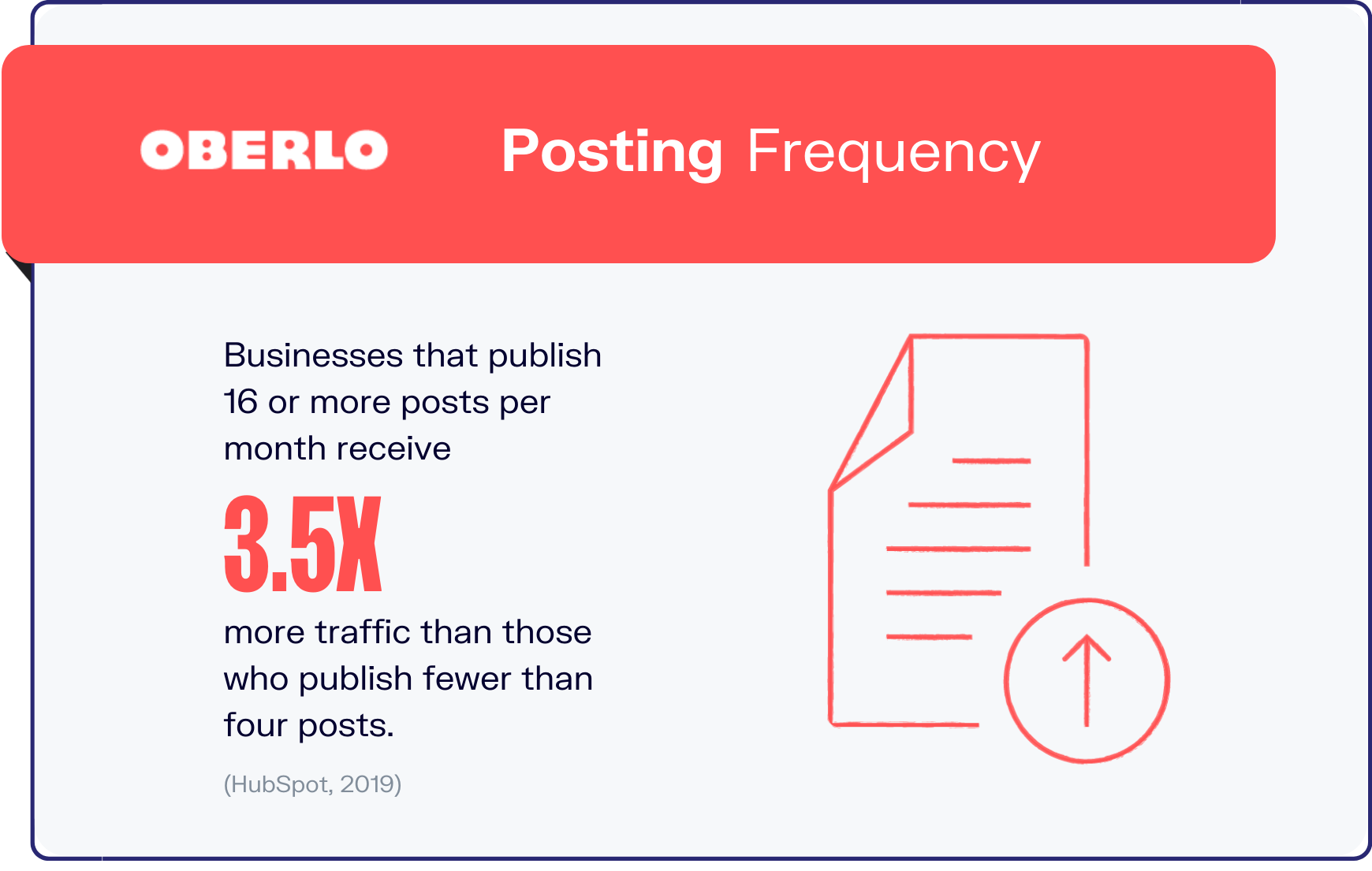
If the above-mentioned blogging statistics have convinced you to start a blog, wonderful. This then begs the question, “How often should I publish a blog post?”
Again, there’s no one right answer to this. But let us quantify it for you.
Companies that publish at least 16 blog posts per month receive 3.5 times more traffic than those that publish fewer than four posts (HubSpot, 2020).
However, this is not a case of “the more the merrier”. Much of it will depend on your resources, priorities, and marketing goals.
For example, if the objective of your blog is to increase organic traffic, you’re better off publishing as often as possible. But if it’s to gain brand awareness, your blogging frequency can be adjusted slightly lower as the key here would be to publish informative content.
9. Role in Consumers’ Buying Process
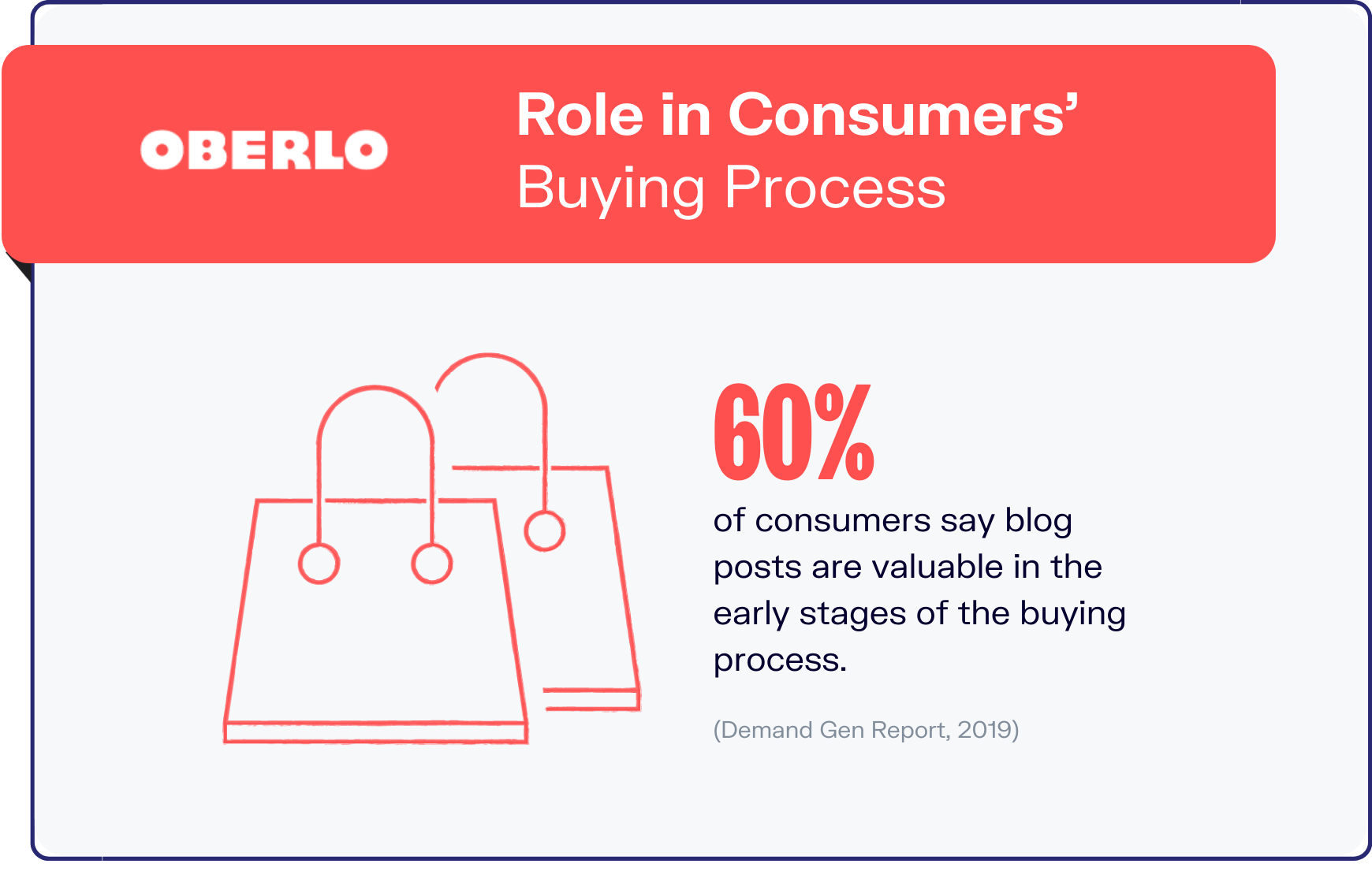
Blogs also play an immense role in the consumers’ purchase process. Its impact is mostly felt in the early stages, with six out of ten buyers reportedly seeing the value of blog posts at the start of their purchase journey (Demand Gen Report, 2019).
Comparatively, one-third of them see value in blog content in the middle stages and just a handful (six percent) say they are of value in the late stages.
If you’re game for using your blog to target consumers in the awareness stages of the purchase funnel, you may want to keep it purely informative and educational. As many as 96 percent of buyers say the quality of content can often be improved by removing sales messages from it.
On that note, two-thirds of them also say they would like for more data and insight from industry leaders to be included.
10. Blogging as Inbound Marketing Priority
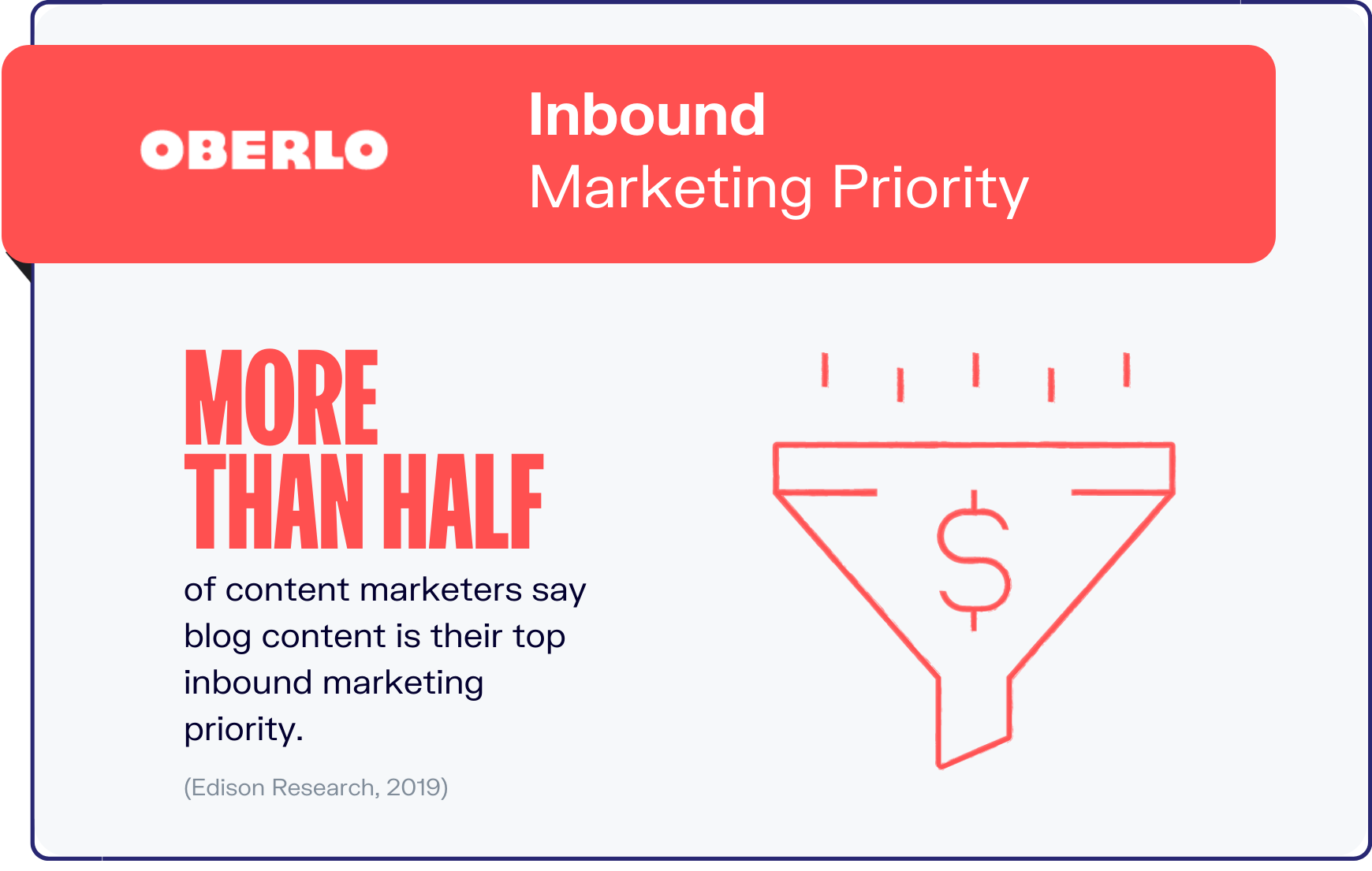
Inbound marketing is a very common strategy with which businesses attract customers to their websites without any hard selling and advertising such as paid ads. Instead, this is done by drawing them in with useful content to first get them familiarized with your brand.
Blogging is one such method and one that’s proven to be particularly important for marketers. More than half (55 percent) of marketers list blog content creation as their top inbound marketing priority (HubSpot, 2020).
This is so much so that 70 percent of them are investing their resources in content marketing heavily, and with good reason: Inbound content marketing efforts bring in three times as many leads as paid advertising.
Conclusion
As these blogging statistics go to show, the benefits of having a blog for your dropshipping business are undeniable.
You’ll have to do more research before you decide how you eventually go about producing blog content. But we hope that these blogging statistics have guided you toward the right strategy.

Summary: Top Blogging Statistics You Need to Know in 2023
- There are currently more than 600 million blogs on the internet out of the 1.9 billion websites.
- The number of active bloggers in the United States was estimated to hit 31.7 million in 2020.
- 92 percent of content marketers use blog posts as part of their marketing strategy.
- Experts recommend writing blog posts of between 1,760 and 2,400 words.
- It takes bloggers an average of 4 hours and 10 minutes to produce a blog post.
- Bloggers say the most important factor for success is the quality of content.
- 97 percent of bloggers use social media to promote their blog posts.
- Businesses that publish 16 or more posts per month receive 3.5 times more traffic than those that publish fewer than four posts.
- 60 percent of consumers say blog posts are valuable in the early stages of the buying process.
- More than half of content marketers say blog content is their top inbound marketing priority.



Want to Learn More?
- BigCommerce vs Shopify: Which One Is Better?
- 13 Best Free Online Courses You Can Start Today
- How to Make Money on YouTube: 6 Effective Strategies
- 15 Pricing Strategies to Boost Your Sales (With Examples)
Is there anything else you’d like to know about blogging statistics and wish was included in this article? Let us know in the comments below!
